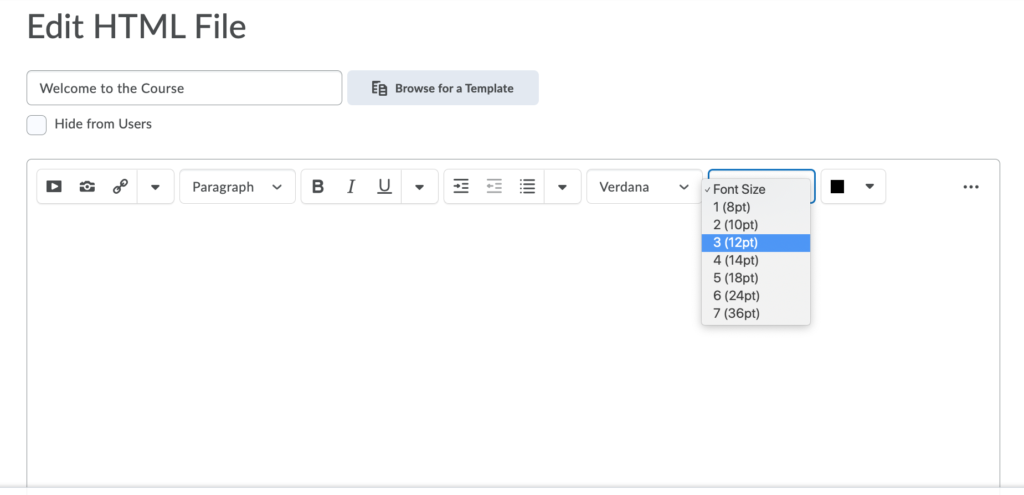8 Font Size
In this section, we review the two main concerns regarding font size on the web.
What is font size?
Font size is the size of text visible on the screen.
Who are you doing this for?
This work supports students who:
- Are blind or have low vision,
- Have a form of cognitive disability
- Are deaf or hard of hearing
- Have a physical disability
What do you need to do?
There are two main concerns when working with font sizes:
- Ensuring that default font sizes are not too small.
- Ensuring that text can be expanded to 200% on websites.[1]
Keep in mind these recommendations and guidelines:
- Use 12 point for body text. For most documents, body text should be around 12 points. Small fonts may be illegible for some audiences.
- Use 9 point for footnotes. If a document contains footnotes or endnotes, the minimum size should be 9 points.
- The Web Content Accessibility Guidelines (WCAG 2.0) recommend ensuring that text can be zoomed to 200%. As well, we recommend using liquid layouts[2] that can accommodate 200% text.
Where do I change Font Size in VIULearn?
You can change the font size using the HTML editor. The screenshot below shows where the font menu is located in the HTML editor.

- "Font Size on the Web," Accessibility and Usability at Penn State, accessed April 17, 2018, http://accessibility.psu.edu/fontsizehtml/. ↵
- Liquid layouts are layouts that are based on percentages of the current browser window's size. They flex with the size of the window, even if the current viewer changes their browser size as they're viewing the site. Liquid width layouts allow a very efficient use of the space provided by any given web browser window or screen resolution. ↵

